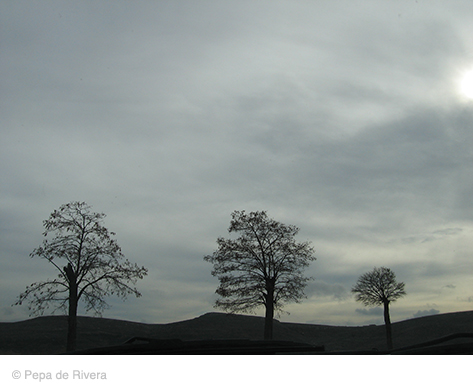The authors do not matter
© Guillermo Labarca

 The starting point of these comments is that the esthetic value of a photograph depends weather from its impact or from its ability to disclose dimensions of the reality that we don't uncover by other means, or both.
Photography, as it is in the other arts, have to be seen then independently of their creator and disregarding the processes that generated them. Authors don't generate impact and the revealing value of the artwork is a consequence of a dialogue between the work and the observer. The author's intentionality is irrelevant and even sometimes the work of art escapes him acquiring a meaning, a stature, a quality that surpass or fall short of their original intentions.
The impact of a work of art depends upon the agents that manage them, in the first place the governments, national or local that direct or indirectly with subsidies, prices, purchases, museums etc. resolve what work deserve public attention. It is paradoxical that the state interventions point to authors and almost never to artworks as if the former were the ones worth preserving.
Other art managers like galleries, journals, critics, curators, publishing houses have their own agendas that allow them to value works or art instead of authors. But we can see that many of those agents tend to make similar approaches as that of the state officers, or they get trapped by the art market that has its own misuses. Nevertheless these are the social agents that may open the doorway to valuations centered on the artwork which are decisive in the medium or long run.
Dispensing with the authors opens us to valuable creations but banned because of the author. By doing so we may appreciate fascist architecture, chinese theater from the cultural revolution period, Kevin Spacey's films or even Norman Mailer's literature or many other authors. The same happens with the moral or political judgements made by artists like Picasso in Guernica or that can be found in the “social” photography by Robert Franck, Sebastian Salgado, Bruce Davidson, Josep Koudelka and many others. A scrutiny of values of the authors or their behavior becomes a screen between the artwork and the spectator restricting their liberty and allowing a fair judgement.
The starting point of these comments is that the esthetic value of a photograph depends weather from its impact or from its ability to disclose dimensions of the reality that we don't uncover by other means, or both.
Photography, as it is in the other arts, have to be seen then independently of their creator and disregarding the processes that generated them. Authors don't generate impact and the revealing value of the artwork is a consequence of a dialogue between the work and the observer. The author's intentionality is irrelevant and even sometimes the work of art escapes him acquiring a meaning, a stature, a quality that surpass or fall short of their original intentions.
The impact of a work of art depends upon the agents that manage them, in the first place the governments, national or local that direct or indirectly with subsidies, prices, purchases, museums etc. resolve what work deserve public attention. It is paradoxical that the state interventions point to authors and almost never to artworks as if the former were the ones worth preserving.
Other art managers like galleries, journals, critics, curators, publishing houses have their own agendas that allow them to value works or art instead of authors. But we can see that many of those agents tend to make similar approaches as that of the state officers, or they get trapped by the art market that has its own misuses. Nevertheless these are the social agents that may open the doorway to valuations centered on the artwork which are decisive in the medium or long run.
Dispensing with the authors opens us to valuable creations but banned because of the author. By doing so we may appreciate fascist architecture, chinese theater from the cultural revolution period, Kevin Spacey's films or even Norman Mailer's literature or many other authors. The same happens with the moral or political judgements made by artists like Picasso in Guernica or that can be found in the “social” photography by Robert Franck, Sebastian Salgado, Bruce Davidson, Josep Koudelka and many others. A scrutiny of values of the authors or their behavior becomes a screen between the artwork and the spectator restricting their liberty and allowing a fair judgement.

